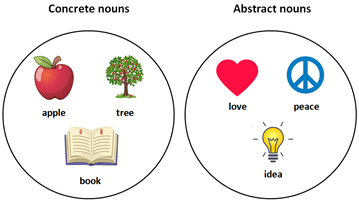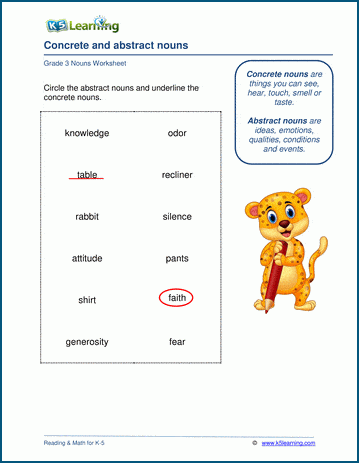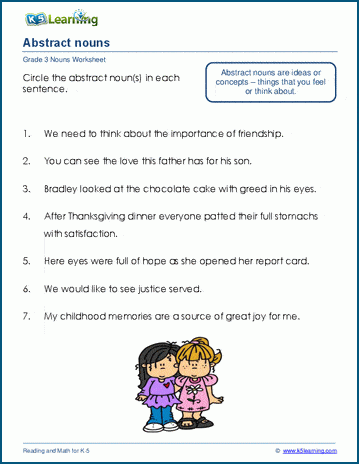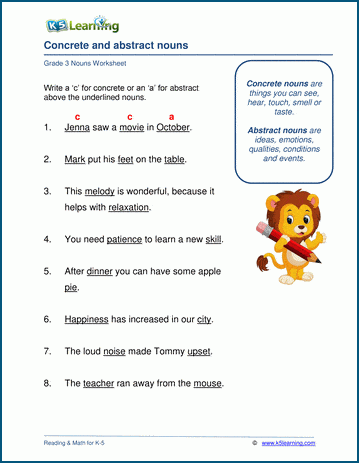In grade 3, students learn to classify nouns. They work on countable and collective nouns, singular and plural nouns, as well as concrete and abstract nouns.
Some students struggle to tell the difference between concrete and abstract nouns, so we thought we’d cover this topic.

What is a concrete noun?
Concrete nouns are things you can see, hear, touch, smell or taste.
For example: The dog barked at the cat. Dog and cat are concrete nouns.
What is an abstract noun?
Abstract nouns are ideas, emotions, qualities, conditions and events. These nouns cannot be seen, heard, tasted, smelled or touched.
For example: A dove is a symbol of peace. Peace is an abstract noun.
Why students struggle with abstract nouns
Students sometimes struggle to identify an abstract noun as some of those words are verbs in some sentences and nouns in other sentences.
For example: love
I love my kitten. In this sentence love is a verb.
Send her my love. In this sentence love is an abstract noun.
Students need to ask if the word is a ‘doing’ word when they read the sentence.
I love my kitten. Is love a doing word? Yes, it is. Send her my love. Is love a doing word? No, send is a doing word.
In our grade 3 grammar section we have created 3 sets of worksheets on concrete or abstract nouns.
Concrete or abstract nouns?
In these worksheets, students are asked to classify words as concrete or abstract nouns.
Abstract nouns
Given a set of sentences, students have to circle the abstract nouns.
Concrete and abstract nouns
This final set of worksheets students indicate the concrete and abstract nouns in sentences.




